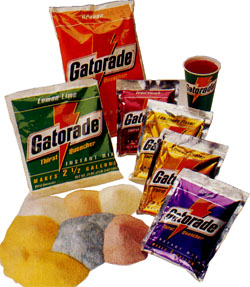We have talked about keeping our workers safe from the hazards of doing their jobs outdoors in the heat and humidity, and how to recognize the signs of heat stroke, heat cramps, etc. But with August just around the corner, indicating it’s time to get ready for football, cross country, and other outdoor sports, we want to focus on our youngsters.
When the temperature is 95° or higher, (and believe me, in Texas, it is!), and the humidity is 75%, this combination slows down the body’s evaporation and sweating doesn’t do its’ job to assist the cooling process. We have found several good tips that parents and coaches should keep in mind to as their youngsters take the field:
1. Instruct all athletes to pre-hydrate. Drinking at least 24 ounces of fluid prior to each workout will help.
2. Allow the athletes to drink 10-12 ounces every 30 minutes of activity. If they wait until they are thirsty, chances are they are already dehydrated.
3. Do not allow athletes to drink carbonated drinks or energy drinks. Keep plenty of water on hand; however, Gatorade has been proven to be better than plain water to replace fluids.
4. Weigh-ins before and after practice will show how much fluid each individual loses and needs to replace.
5. Let the players become acclimated to the hot weather. Remember that younger persons adjust more slowly than adults to hot and humid conditions.
6. Lighter clothing helps promote heat loss. Helmets need to be removed periodically, as the body can cool itself more efficiently. Helmets retain significant amounts of heat.
7. Heat production is proportional to body weight, so be sure to observe very large or obese players for early signs of heat stress.
8. Ask athletes if they taking antibiotics, which can cause them to be more susceptible to heat illness.
Good training is very important. Youngsters should train for the sport rather than expect the sport to get them into shape. Coaches can help by choosing a conditioning program that is suited for the individual athlete. Youngsters that enjoy going out for a particular sport should be encouraged by parents and coaches to follow the rules of the game. Those playing contact sports should have the proper equipment to decrease risks of injury.
One of the most important bits of advice that we can pass on is for parents and coaches to encourage healthy competition, not a “win at all costs” attitude, and let them have FUN! In return, our youngsters will enjoy the experience of teamwork and develop a positive self-image that will carry on throughout their lives.
![[gickr.com]_1e6b2394-3a63-7b34-8127-46a4264028dd Various Safety Posters](http://www.blog4safety.com/wp-content/uploads/2009/07/gickr.com_1e6b2394-3a63-7b34-8127-46a4264028dd.gif)